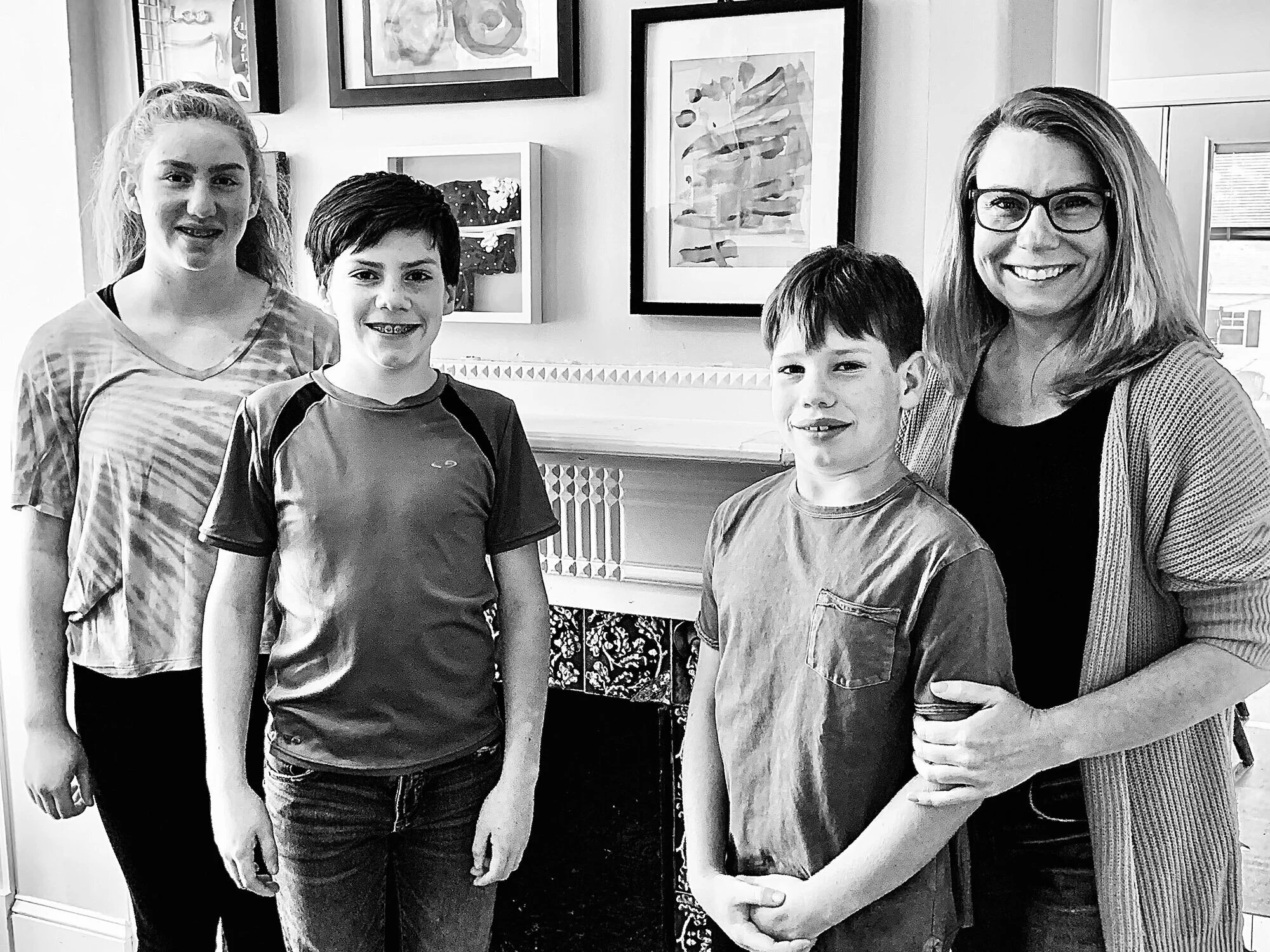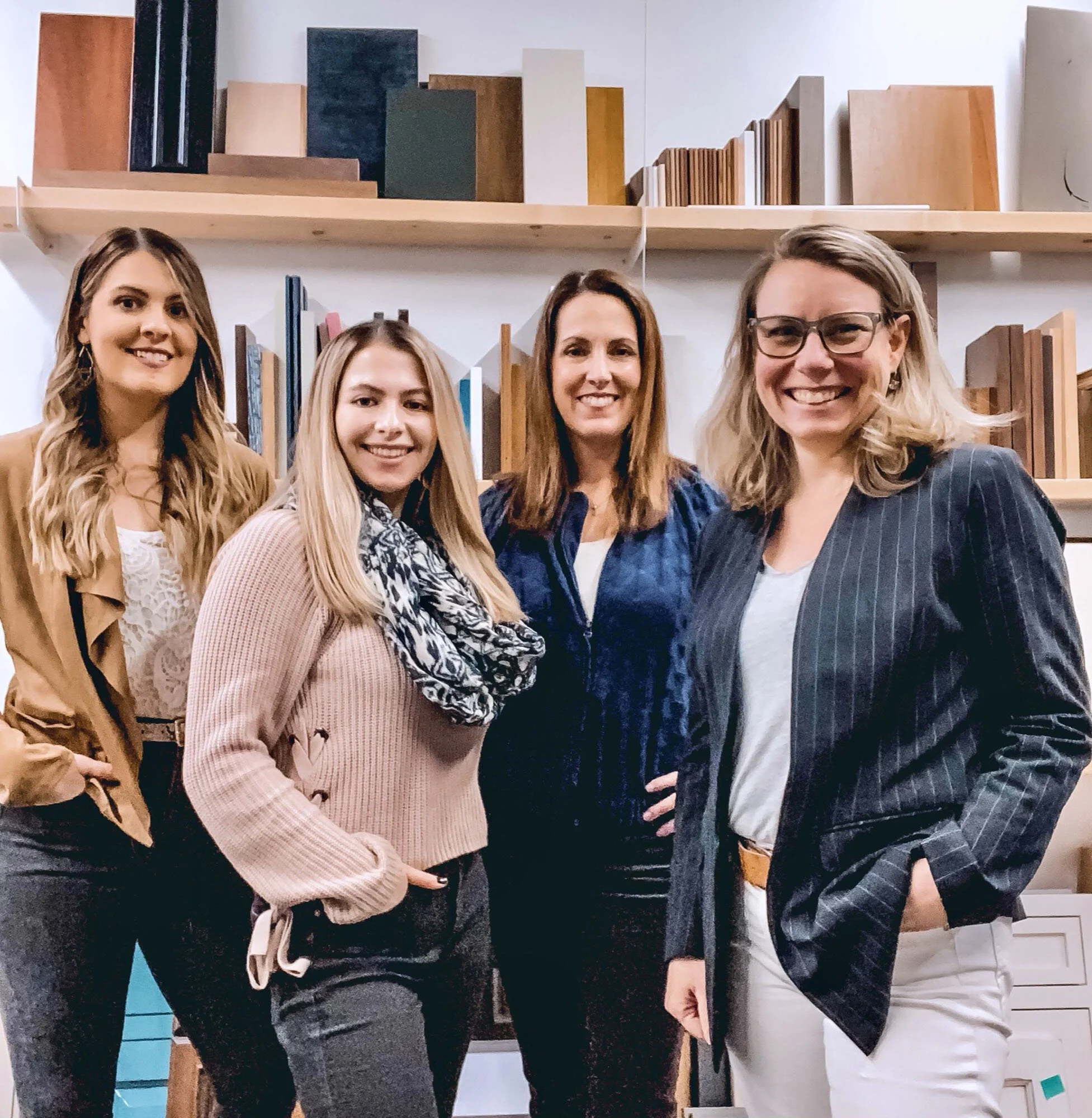Getting to Know You (and Your Home): A Decade of Taking a Personal Approach to Design
(Right to left) Kaycee Conallen in front of a restored fireplace in her home, with her children, Brady, Michael, and Molly. Photo: Brian Conallen
Before Kaycee Conallen gets to work on your home renovation project, the architect and designer wants to get to know you. Specifically, she wants to know about your relationship with your home.
“I ask, ‘What don’t you like about this room when you’re eating dinner?’” she explains. “Who’s doing most of the cooking? Are you buying groceries from Costco — the big-size stuff? Or are you going to the Co-op every day and getting a couple of things?”
She wants to know what clients do and don’t like about their current space, which doors they use, whose noise bothers whom and when. “I want them to just download all their stuff and then I can make a master plan that solves their issues,” she says. “In the words of designer Nate Berkus, I believe ‘your home should rise up to meet you.’”
This year, Conallen is celebrating a decade as the proprietor of Kaycee Conallen Design. At first, she ran the business out of her house, but for the last two years, she’s set up shop in Warehouse 4 behind 100 Park Ave. in Swarthmore. Her company oversees projects from beginning to end, helping homeowners with everything from weighing the merit of a renovation and finding trusted tradespeople to settling on finishing touches like light fixtures and furniture.
The Kaycee Conallen design team includes (left to right) Shanna Bowers, Chelsey Glidden, Jennifer Drummond, and Kaycee Conallen. Photo: Kaycee Conallen
Conallen grew up in South Jersey, the youngest of five sisters. She recalls that her father, a mechanic, had a visual, problem-solving brain. Her mother, an X-ray technician, sewed prom gowns and chair cushions. Home design was a family passion and topic of conversation. “After church on Sundays, we’d all pile into the car and go to model homes,” Conallen says. “We’d walk around the houses like, ‘Oh, I like how they did this, I like how they did that!’”
As a kid, Conallen loved to paint and to build sandbox constructions. “I always had watercolors on my floor,” she says. In college, looking for something practical to study, she tried architecture. From the first class, she was hooked.
After graduation, she spent a decade at Philadelphia architecture firms. But when she and her husband decided to move out of the city, she left that behind. They bought a fixer-up in Rutledge, and Conallen managed the renovation. Then a friend asked her to help with an addition. “One thing led to another,” she says.
The Bones of a House
Once Conallen gets to know her clients, the next thing she considers is the space she has to work with. “My architectural background has trained me to be respectful of the architecture — the bones of the house,” she says.
For example, fancy moldings would be out of place in a mid-century modern house, while in a 1920s neocolonial, windows should have grills, the right kind of shutters, and probably wood floors. “Those sorts of touches enhance what the house wants to do,” she says.
For one project, the challenge was to create a spacious, welcoming kitchen for a house with a small, awkward, L-shaped one. The couple who owned the house had kids, but when a parent was cooking or cleaning up, they felt isolated and alone. Because of the L-shape, Conallen explains, “even if someone else was there, they couldn’t see each other.”
Conallen addressed the problem by opening up a wall, then designing a bar as a transition zone into the rest of the house. “The breakfast bar can also be an entertaining bar just by changing the dishes,” she says. On ordinary days, the kids eat their cereal there, and on special occasions, it becomes a party space.
Color and light are important to Conallen. She thinks many people misunderstand how to use color in a house. Rather than approaching each room as a separate entity, she coordinates the colors of all the spaces into a whole-house palette. Wary of trendy colors, she advises considering a room’s natural light when choosing hues.
“We work with the natural qualities of light coming into a room,” she says, explaining that, if you paint a small, windowless powder room white, it’s still going to feel dim and dark. Instead, “you should just work with it,” she advises, and paint it a dark color.
If the room is sometimes light and other times dark, there’s always wallpaper.
When Work Comes Home
Conallen may not be working from home anymore, but her house is one of her projects. “I’m always changing it,” she says. “We have an old Victorian that was badly renovated, and we are getting ready to do what we can to bring it back to its glory within budget, which is not going to be easy.”
Now that her kids are getting a little older (14, 12, and 10), she’s happy to let them help guide the changes in their rooms. “Except for paint colors,” she says, laughing. “I’m the only one who’s allowed to pick paint colors in my house.” She has furnished the home largely with hand-me-downs and vintage finds, reporting that “I’ve only bought four pieces of furniture brand new.”
Not that she has much time for her own projects. The pandemic has brought about a rush of renovation work throughout the country. Even with two new assistants, Conallen often finds herself working far in excess of 40 hours a week. But she loves what she does, and she values the relationships she builds with her clients. (One client joked that she was going to make T-shirts printed with “IKWT” for “In Kaycee We Trust.”)
Conallen hopes her office in Warehouse 4 can be a resource for the community — a place to learn about carpets, cabinetry, light fixtures, or wallpaper (wallpaper is transformative, she avers). “We’re not just off the shelf,” she says. If someone needs an uncommon piece of furniture, or an oddly sized vanity cabinet, she hopes they’ll come to her.
“What you choose to put in your home,” Conallen says, “it matters.”





